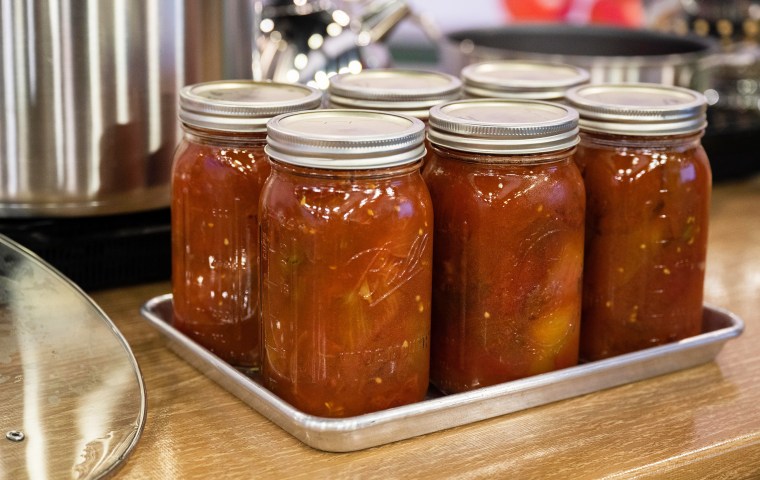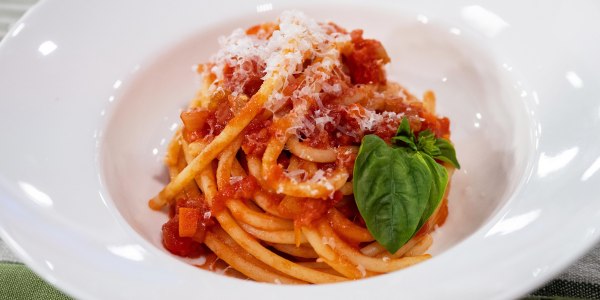As the end of summer approaches, so too does the end of tomato season. And boy, will we miss those sweet, juicy tomatoes in the dead of winter. But Martha Stewart has a solution: Preserve them! She is stopping by the TODAY kitchen to show us how to properly can them, as well as how to turn them into her go-to marinara sauce, so you’ll have a taste of summer at your fingertips all year long.
This basic marinara is one of my favorite ways to utilize the tomatoes from my garden. For great results, finish cooking pasta in the sauce, adding a little pasta water.
How to can tomatoes

My canned tomatoes recipe method used here employs the water bath canning technique. Before you start any canning recipe, make sure to have clean and sterilized canning supplies (here’s how to do that).
- Bring a pot of water to a boil. Meanwhile, prepare an ice bath.
- Wash and drain the tomatoes, then score a shallow X in the bottom of each tomato.
- Blanch the tomatoes in a pot of boiling water — just long enough for the skins to soften and loosen, about 30 seconds, then submerge them in the ice bath.
- With a paring knife, remove the peels, stems and seeds. Reserve tomato juices.
- Sterilize mason jars. For pint jars, add ½ teaspoon salt and ¼ teaspoon citric acid (or 1 tablespoon lemon juice). For quart jars, add 1 teaspoon salt and ½ teaspoon citric acid (or 2 tablespoons lemon juice).
- Using a wide-mouth funnel, fill jars with tomatoes along with any juices from preparing the tomatoes. Leave a 1/2 inch of space at the top of each jar’s neck, so there is room for expansion when it is heated.
- Using a stainless steel straight spatula, carefully go down the inside of the jar to remove any air bubbles. When doing this, be sure to lift and move the spatula as you go around instead of running the spatula along the sides of the jar.
- Wipe the jar rims with a damp towel. It is important to make sure there are no seeds or bits of flesh on the rims that could prevent the seals from forming.
- Place the tops and screw-on ring bands onto the jars until they are snug, but not too tight. When putting the lids on, press the lid to keep any air out — this is also a very important step.
- Prepare a large pot with canning racks and about three inches of water. The water should be simmering.
- Using tongs or canning jar clamps, place the jars on the raised rack in the pot. It is important that the jars are spaced about an inch apart, and that they don’t touch the sides of the pot. Add boiling water to cover, if needed, and then cover the pot. Bring water to a rolling boil, then reduce to a gentle but steady boil, and process the jars for 40 minutes for pints or 45 minutes for quarts. The jars must remain covered with water throughout processing time.
- Once done, turn off the heat and wait about 5 minutes before removing the jars. As they cool, you may hear the lids ping, which is a sign that vacuum sealing has occurred.
- Remove the jars and place them on upright on a dry towel or cooling rack no less than 1 inch apart. I like to let them cool for 24 hours. After several hours, check that each lid is concave. If the lid pops back, it is not sealed and will have to go through the process again.
- Sealed jars can be stored in a cool, dark place for up to a year. After opening, tomatoes can be refrigerated up to one week. Label them with canning dates.
